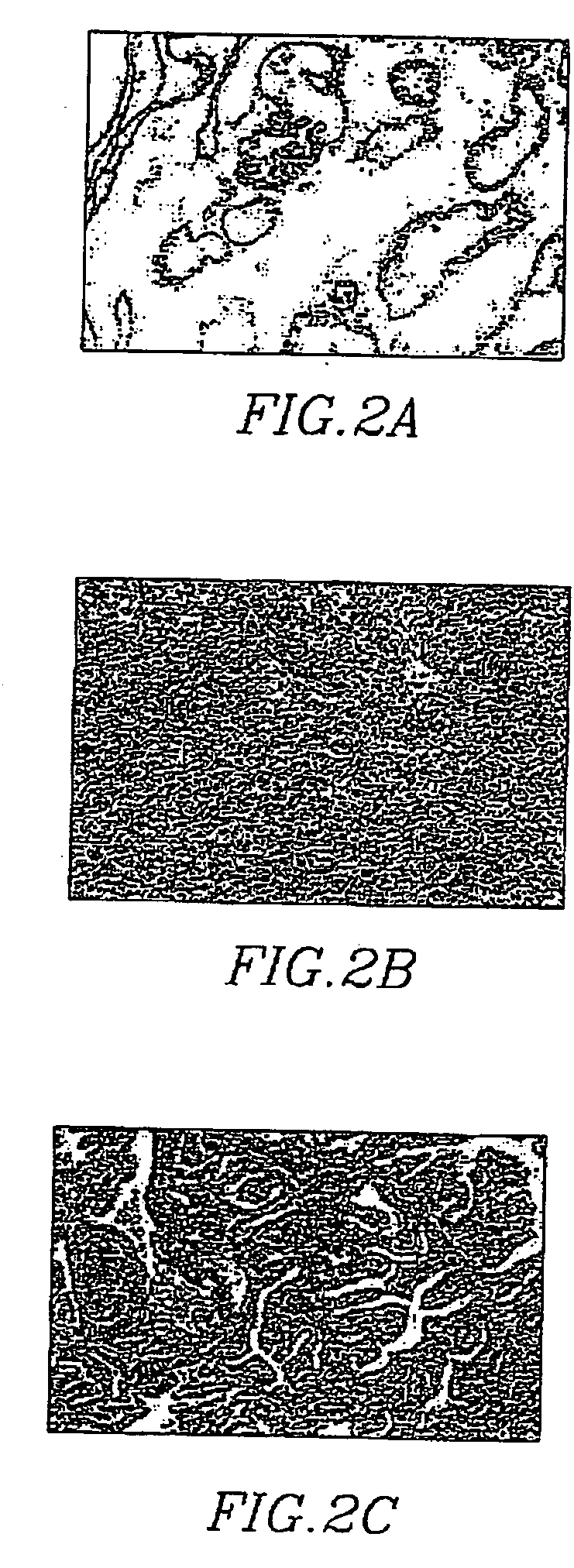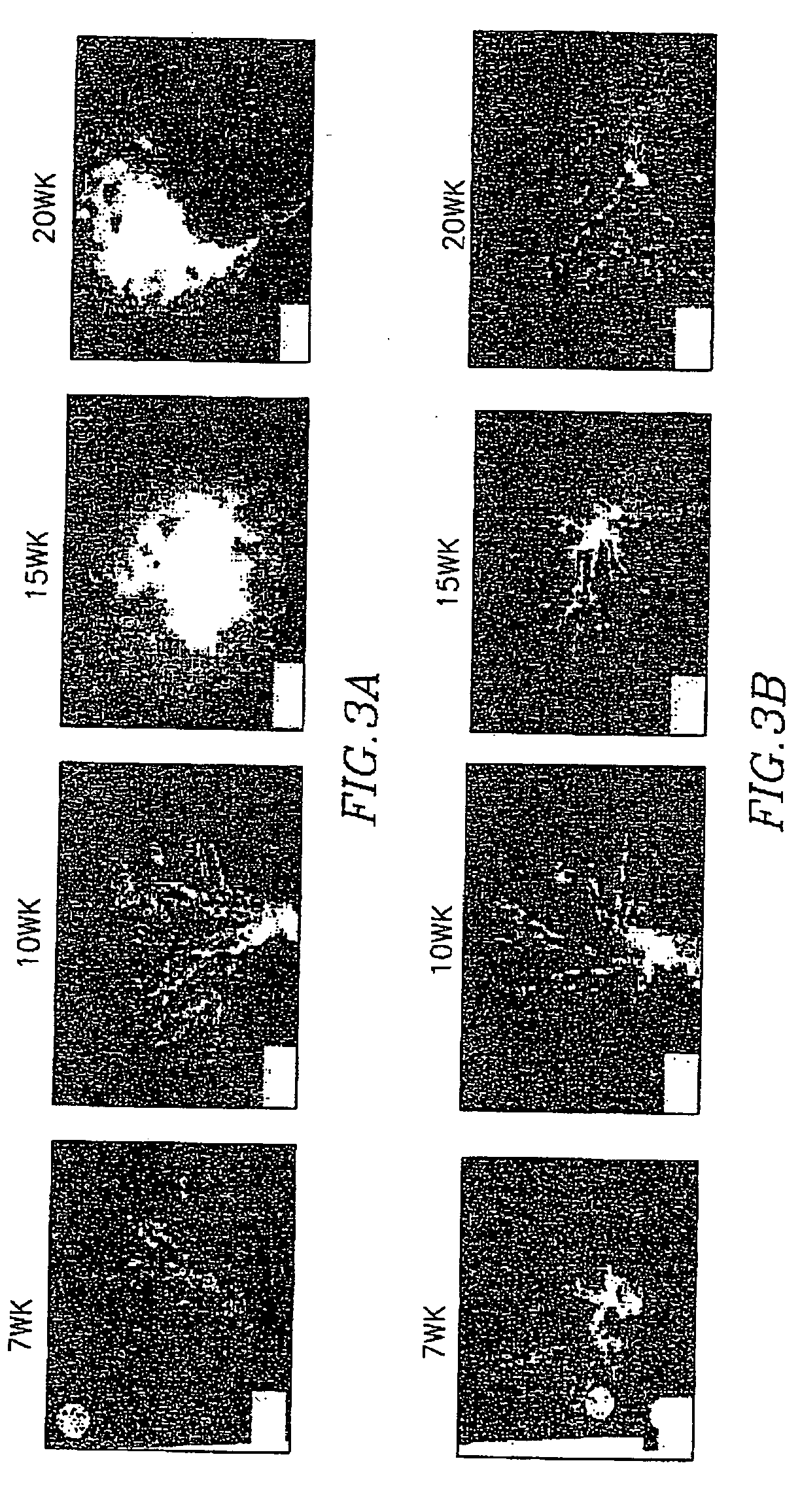Method for treatment and chemoprevention of prostate cancer
a prostate cancer and chemoprevention technology, applied in the field of prostate cancer treatment and chemoprevention, can solve the problems of reducing the number of advanced prostate cancer patients, suppressing and preventing the recurrence of prostate cancer. , inhibiting or reducing the incidence of prostate cancer
- Summary
- Abstract
- Description
- Claims
- Application Information
AI Technical Summary
Benefits of technology
Problems solved by technology
Method used
Image
Examples
example i
Transgenic Adenocarcinoma Mouse Prostate
[0081] The study of prostate cancer chemoprevention has been hindered by the lack of appropriate animal models. The recent development of the transgenic adenocarcinoma mouse prostate (TRAMP) model enables the study of chemoprevention In the TRAMP model, which is described in Greenberg et al., “A Prostate cancer in a transgenic mouse”, Proc. Natl Acad. Sci. USA, 1995, Vol. 92, pages 3439-3443, the PB-SV40 large T. antigen (PB-Tag) transgene is expressed specifically in the epithelial cells of the murine prostate. As a result, this model has several advantages over currently existing models. 1) mice develop progressive forms of prostatic epithelial hyperplasia as early as 10 weeks and invasive adenocarcinoma around 18 weeks of age; 2) the metastatic spread of prostate cancer pattern mimics human prostate cancer with the common sites of metastases being lymph node, lung, kidney, adrenal gland, and bone; 3) the development as well as the progress...
example 2
Immunohistochemistry Data Analysis
[0087] Microscopy images of each tissue section are evaluated using computer-assisted (Mac 9500-I 32 computer and monitor) image quantitation (NIH-Image 1.6 PPC) using Kodak DCS 460 camera on Nikon Microphot-FX microscope and quantitated using a color-assisted quantitative system image analysis (IPLab Spectrum 3.1, Scanalytics, Inc., VA) that distinguishes color differences of stained tissue sections. Thresholds are set to identify various tissue components of the prostate. The area pixel densities corresponding to each of these tissue components are calculated for each full screen of the color monitor. A total of 5 screens per prostate section are averaged. Immunohistochemical images can be digitalized and quantitated to enable statistical evaluation by determination of sample correlation coefficients and probability (2-tailed).
example 3
Study of Chemopreventive Activity
[0088] A study was undertaken to test the efficacy of chemopreventive agents in TRAMP transgenic animals (PBTag×FVBwt)(provided by Dr. Norman Greenberg, Baylor College of Medicine, Tex.). These mice showed preliminary signs of cancer as early as 10 weeks. The TRAMP transgenic male litters were screened for the Large T ag transgene, and the positive males were used in the study. The antiestrogen toremifene, which was to be tested for its possible chemopreventive effects, was incorporated in customized pellets (Innovative Research of America, Sarasota, Fla.), and chemopreventive treatment of mice was initiated postnatally at 30 days (average mouse weight 14 g). Four groups of 10-12 animals each received subcutaneous implantations of 90 day-release toremifene-containing pellets. The diffusible drug dosage, adjusted for growth related changes in weight, was designed to deliver either a low dose (6mg / kg) or a high dose (30 mg / kg) of toremifene. Control a...
PUM
| Property | Measurement | Unit |
|---|---|---|
| weight | aaaaa | aaaaa |
| frequency | aaaaa | aaaaa |
| multidrug resistance | aaaaa | aaaaa |
Abstract
Description
Claims
Application Information
 Login to View More
Login to View More - R&D
- Intellectual Property
- Life Sciences
- Materials
- Tech Scout
- Unparalleled Data Quality
- Higher Quality Content
- 60% Fewer Hallucinations
Browse by: Latest US Patents, China's latest patents, Technical Efficacy Thesaurus, Application Domain, Technology Topic, Popular Technical Reports.
© 2025 PatSnap. All rights reserved.Legal|Privacy policy|Modern Slavery Act Transparency Statement|Sitemap|About US| Contact US: help@patsnap.com



